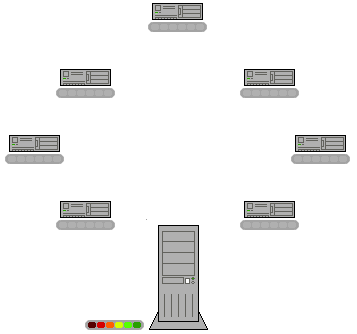BitTorrent Reconsidered
This past weekend I was wearing an old BitTorrent t-shirt that has printed on the back: "Give and ye Shall receive." While waiting in a store checkout line, a man behind me said, "BitTorrent? Are you a software pirate?"
To many people, BitTorrent is still synonymous with piracy. BitTorrent was and probably used for some questionable and illegal file transfers, but it’s also being used for many legitimate tasks.
A programmer, Bram Cohen, designed the protocol and released the first available version in July 2001, and it quickly became the preferred way to share large files, especially movies. In the public mind, it is blurred together with other file sharing programs like Napster, which was used to share music (mp3) files.
 Like HTTP, which your browser uses to communicate with websites, BitTorrent is just a protocol. People were sharing pirated files of all kinds before BitTorrent using anonymous peer-to-peer networks, but this new protocol made it much faster and more efficient.
Like HTTP, which your browser uses to communicate with websites, BitTorrent is just a protocol. People were sharing pirated files of all kinds before BitTorrent using anonymous peer-to-peer networks, but this new protocol made it much faster and more efficient.
The BitTorrent protocol uses client computers to share individual piece of the file. After the initial pieces transfer from the seed, the pieces are individually transferred from client to client and that original seeder only needs to send out one copy of the file for all the clients to receive a copy.
BitTorrent Sync is a use that is comparable to Dropbox, a popular file sharing system. But unlike Dropbox, Sync doesn’t store your files in a centralized server online. It syncs them between computers you own or computers your friends own. It allows easy file sharing and you can sync an unlimited number of files as long as you have the space on your computers for them. (Dropbox offers that extra space, which many of us need.)
The most recent version of BitTorrent was released in 2013 and BitTorrent clients are available for a variety of computing platforms and operating systems including an official client released by BitTorrent, Inc.
What are some of the current legal uses?
Some game companies use it for game updates and downloads. For example, Blizzard Entertainment uses its own BitTorrent client to download World of Warcraft, Starcraft II, and Diablo III. When you legally purchase one of these games and download it, you’re downloading a BitTorrent client that does it and the game’s launcher automatically downloads updates for you.
Facebook uses the BitTorrent protocol for propagating large files over a large number of different servers.
It also has educational users. Florida State University uses BitTorrent to distribute large scientific data sets to its researchers. Many universities that have BOINC distributed computing projects have used the BitTorrent functionality of the client-server system to reduce the bandwidth costs of distributing the client-side applications used to process the scientific data. The developing Human Connectome Project uses BitTorrent.
The popular Internet Archive uses the protocol to make its public domain content downloadable.
In 2010, the UK government released several large data sets showing how public money was being spent that were offered via BitTorrent to save on bandwidth costs and speed the process.
NASA has also used BitTorrent to make a 2.9GB picture of the Earth available.
Like Napster, which rebranded and reinented itself after all the lawsuits into a "legitimate" music service, the official BitTorrent website has a list of “bundles” of music and videos. Artists make them freely available to hook fans, just as radio was once used to provide free music to large audiences in hopes that they’ll attend live shows and buy albums.
If we got rid of BitTorrent, another similar protocol would need to emerge.

 The term "personalized learning" came up recently in several articles about Facebook founder and CEO Mark Zuckerberg and his pediatrician wife Priscilla Chan investing hundreds of millions of dollars a year in a new vision of “whole-child personalized learning.”
The term "personalized learning" came up recently in several articles about Facebook founder and CEO Mark Zuckerberg and his pediatrician wife Priscilla Chan investing hundreds of millions of dollars a year in a new vision of “whole-child personalized learning.”
 . It is co-written by
. It is co-written by  , who is considered "the father of the theory of disruptive innovation." His previous books include
, who is considered "the father of the theory of disruptive innovation." His previous books include  , which examined business innovation, and
, which examined business innovation, and 